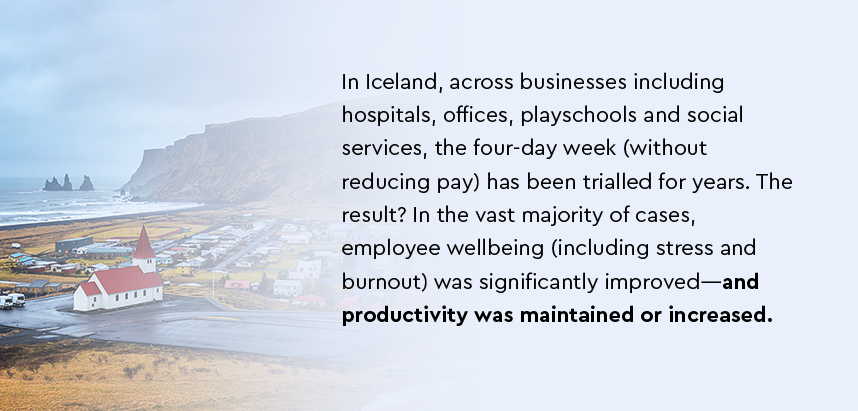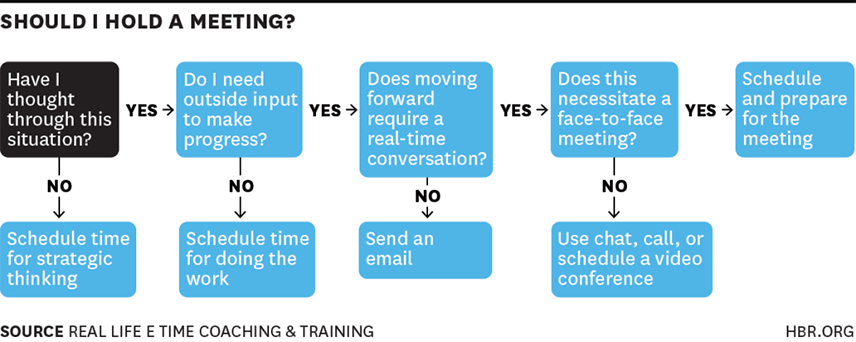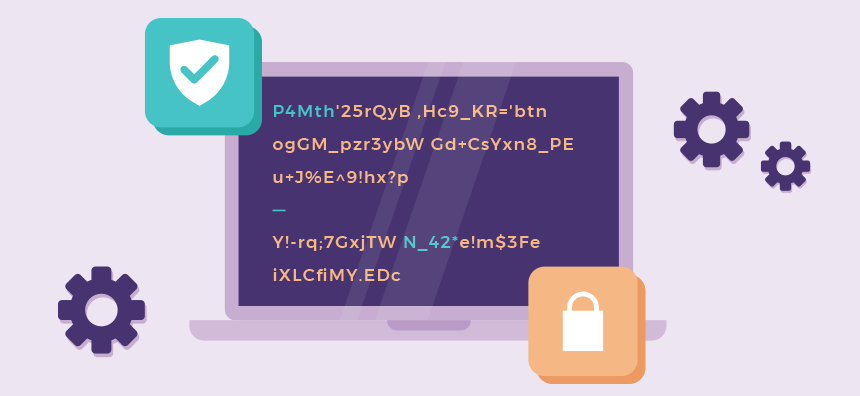Introduction
When it comes to improving productivity, there are no silver bullets. It’s not possible to apply a single trick (say, installing the hottest new software) that “cures” productivity within your organization.
The reality is that there are hundreds of ways you can improve employee productivity. Some of them are massive, some are small, and the benefits of every single one compound. And don’t worry—we’ll cover all of the most effective ones here.
There is also a certain hierarchy to productivity change. Changes at the employee level are most popular. However it’s also possible to adapt the philosophy of an entire organization and create a dramatic, if less direct, improvement to productivity this way. Sometimes implementing organization-wide changes makes employee-level changes even more impactful.
What we’re saying is that no solution works in isolation. And even if it did, aggregating gains is much more powerful.
How to get the most value from this guide
Any company can make ingrained productivity and efficiency part of its DNA.
Not with quick hacks (though we will recommend valuable tools later) but through considered, systematic changes—both psychological and practical.
So if you want maximum productivity, implement as much of what you read as possible. This article is the result of extensive research, analysis and personal experience. It’s long and it’s thorough and if you can apply these principles consistently, you will make high productivity the standard for your entire company.
But before we launch into transforming your workforce, we need to get on the same page.
It’s crucial to address a few misconceptions about what productivity actually is and what it means to truly be productive. (Hint: it’s not about working 100-hour weeks and tanking coffee.)
It’s all far more boring, simple, and effective than those things.
Don’t have time to read the full piece? Here are the three hardest-hitting, most transformational sections you have to read:
- Stop maximizing “chair time”
- Control interruptions
- Optimize meetings
But if you want to build a company with productivity in its veins, read this piece from top to bottom and implement everything you can. It will add the perspective and context needed to spearhead massive productivity growth in your business.
Understanding Productivity and Combatting Misconceptions
Misconceptions about productivity
#1 Productivity is doing things faster
Someone needs to stop giving internet gurus and copycat bloggers access to keyboards. This idea that efficiency is “a measure of how quickly assigned tasks are completed” is archaic and overly simplistic.
Those who complete the largest volume of tasks in the shortest amount of time, every day, are rarely the most productive.
Productivity is better defined as sustained effort over the course of the day or week: it is getting important things done consistently.
❌ Productivity isn’t getting more things done each day.
✔️ Productivity is getting important things done consistently.
This is the first major misconception about productivity. Your goal for employees should be having them consistently tackle important tasks. Not with the explosive power of a sprinter, but with the steady pace of a marathon runner.

Why consistency beats quantity
When presented with two routes, humans take the easiest one by default. The reason? Getting things done feels good. That little dopamine kick when you score something off your to-do list? Marvelous.
Humans are also spectacularly prone to building up daunting tasks in our own heads: the longer we leave that important job, the bigger and scarier it gets.
By shifting the focus from doing any old task faster—and instead focusing on completing important tasks consistently—employees might not tick off 80% of their to-do list in 2 hours. What they will do is complete a higher percentage of the tasks which add the most value to the business.

#2 Chair time correlates with high-performance
There are endless studies showing that modern knowledge workers are productive less than half the time they’re in office. About 3 hours a day, on average.
Part of the problem is that we value chair time so, so highly. Companies and individuals are obsessed with the idea that being present at your desk from 8am to 5pm makes you a contributor. And what about those 7am to 7pm superstars, grinding away every day?
Grinding is fine if it’s a choice. Creating a culture of “working” late every day is not. It’s not only unhealthy, it’s extremely detrimental to productivity because it’s simply not possible to focus for that long without regular rest and breaks. Plus, those employees probably spend large parts of their day reading the news, chatting to friends, or scrolling social media.
But hey—they’re at a desk!
#3 Productivity is all about adding more good stuff
When you want to lose weight, you don’t counter the post-dinner cheesecake by also drinking a fruit smoothie—you simply drop the cheesecake.
It’s the same thing at work. Most people and organizations look at productivity the wrong way: they search for hacks to supercharge their activity and unlock superhuman performance.
Rather than pushing the ceiling, they should be raising their floor.
Much of this article will focus on how employees can stop eating the cheesecake: addressing the underlying lack of productivity to unlock bigger productivity gains and deeper focus. It’s productivity by omission, and it’s important for organizations and managers to recognize its importance.
There’s an adage that goes, “The easiest way to make money is to not spend it.” Well, same goes for work: the easiest way to become more productive is to be less unproductive!
It’s only once we’ve achieved this that strategies for bolstering efficiency and concentration become truly valuable.

#4 Employees can “be productive” all day long
There are actually two problems here:
- First, our definition of productivity is usually bad (like hurtling through tasks at breakneck speed or getting maximum chair time…)
- And second, our terrible habit of assessing “productivity” on too short timescales
Here’s what we mean by that.
Imagine the manager is patrolling the office. She sees Brian with an Excel spreadsheet open, while Marta is drinking a coffee and reading The Economist.
Our always-be-working culture makes us think that Marta is a slacker while Brian is hustling away. But if Brian has been staring at that spreadsheet for 4 hours while regularly checking his phone, he’s not actually accomplishing anything. (This, by the way, is extraordinarily common.)
But if Marta has just eaten, knocked out the biggest hurdle of the day, and is sensibly recharging with a mental break from work (coffee + magazine), she’s actually having a far more productive day.
Timescale is important. We can’t rate productivity over an hour; there’s too much variance. And by our improved definition (completing important tasks consistently), productivity won’t always look like “hard work”.
Looking over the course of an entire day, we can assess productivity much more clearly. The employee who manages their time well and sustains a high average work rate (in this case, Marta) gets their full credit.
(We’ll revisit the idea of measuring productivity—and whether you should try to—a little later on.)
How productivity change occurs
Before we jump into the practical, actionable productivity transformations, we want you to understand how productivity change actually occurs and how this will impact your organization.
Productivity Accumulates Over Time
There is no more powerful concept in productivity optimization than the aggregation of marginal gains. Or in other words: small changes add up.
We touched on this already, but wanted to back it up with an example. When revered performance director Dave Brailsford was hired as head of British Cycling, marginal gains was his thing. His team constantly hunted for gains wherever they could be found—even if they were tiny.
“The whole principle came from the idea that if you broke down everything you could think of that goes into riding a bike, and then improve it by 1 percent, you will get a significant increase when you put them all together.”
This process turned a below-average cycling nation into the most dominant and successful racing country in history, winning virtually everything for an entire decade. It’ll work for you, too.
What this means for your organization
We’re going to share a lot of extremely impactful, implementable advice in this article. Changes like optimizing meetings and controlling interruptions have obvious and rapid value. Other points may seem less obviously useful, but they all add up. We want you to remember this philosophy of aggregating gains and apply as much of what you read as possible.
Between all the tips we share in this piece, it’s not a matter of if your teams get more productive—it’s simply a matter of how much.

Changes at the organizational level
Most productivity advice starts at the employee level—how to manage time, controlling distractions, taking ownership for deadlines and so on. And we’re going to cover these points extensively.
But it’s also crucial to recognize the enormous productivity gains which can be made at the organizational level. Changes to company culture and processes that have cascading effects throughout the company.
The first and biggest of these changes is addressing everything that’s wrong with our ingrained, archaic 40-hour work week. Amid the pursuit of heightened productivity, organizations are redefining work structures, with a notable shift towards embracing the Employer of Record model. Unlike the conventional 40-hour work week, EOR introduces flexibility and efficiency, prioritizing outcomes over rigid time frames. This innovative approach fosters a dynamic collaboration between employers and employees, emphasizing results rather than micromanaging hours. By incorporating EOR into the organizational culture, companies not only adapt to the evolving workforce landscape but also nurture improved work-life balance, heightened morale, and sustained productivity gains. The move towards EOR signifies a commitment to progress and a forward-looking strategy in cultivating a highly productive and engaged workforce.
Stop maximizing “chair time”
Here’s the most challenging statement in this article: the 40-hour work week is the biggest employee productivity drain in your business.
The vast majority of professionals are paid salaries built around hourly rates: an employee works 40 hours a week to take home $50,000 a year. And since this has been the norm for a hundred years, most of us don’t question it.
Well you should question it. Because by doing away with this rigid, outdated model, you can cultivate happier, more creative and far more productive employees. Let’s discuss how you can replace this with a better system.
Implement a system that works for your people
Most companies hold regular planning sessions between managers and employees:
- Here are your objectives for this week/month/quarter
- What do you want to achieve?
- How will you be allocating your time?
Through mutual discussion, a set of goals and outcomes is agreed for the upcoming period. The goal is to make sure employees know what they’re doing, have a clear purpose and contribute value to the company. Where in all this do 8-hour, 5-day weeks seem necessary?
As Cal Newport, one of the world’s pre-eminent productivity researchers, says: it would be “arrogant and ahistoric” to assume that the current approach to work is best. Here are some common alternatives to the standard 40-hour (or 37.5-hour) work week, each of which has been shown to create more stimulated, driven, and productive employees:
- The 4-day work week (without lowering pay)
- The 6-hour work day (without lowering pay)
- Outcome-based contracts

The 4-day work week
There’s nothing inherently wrong with working 5 days a week—but there’s nothing absolutely correct about it, either.
Countries like Iceland, New Zealand and Japan have tested four-day work weeks extensively. They haven’t compressed 40 hours’ work into a smaller space, but instead prioritized tasks and re-evaluated the expected output for every role. The goal, of course, is to improve employee wellbeing and productivity at the same time.
Among other results, workers reported anywhere from a 25% to 40% increase in productivity, as well as an improved work-life balance, less need to take sick days, more time to spend with family and children, less money spent on childcare, and a more flexible working schedule which led to better morale.
And that is the key: workers are happier, more enthused and prepared to expend more energy in the workplace in exchange for, essentially, being there less often.
In Iceland, across businesses including hospitals, offices, playschools and social services, the four-day week (without reducing pay) has been trialled for years. The result? In the vast majority of cases, employee wellbeing (including stress and burnout) was significantly improved—and productivity was maintained or increased.

The 6-hour work day
The shorter work day is about eliminating wasted hours. Many surveys have concluded we’re productive about 3 hours a day. This can be drastically improved by better management and processes (see the rest of this article) but at the same time, there are practical limits to how long we can sustain deep focus at work.
Most employees find 8-hour days draining—it’s why they’re so tired and it’s why their productivity skews downwards over the course of a day. Cutting out two hours a day has cascading effects:
- Employees know the day is shorter, so they feel more energized. Rather than lamenting a 5pm finish, they excitedly anticipate 3pm.
- Stamina is usually managed over 8 hours. Now they can put more energy into each hour, hence working more productively.
- Since each day is less tiring, employees don’t lose as much energy over the week. (Normally employees are exhausted on Fridays; those working 6-hour days reported feeling energetic and upbeat, even on Friday afternoons.)
The obvious gain here is employee wellbeing, but productivity also increases markedly. Employees sustain higher levels of output over a shorter period of time. Often the overall output is even higher (and of noticeably higher quality) than over longer days.
That’s why you don’t cut the pay: employees are delivering as much output (or very close) but the quality of that output is higher. They also lose significantly fewer days to illness, sick leave, stress, and anxiety, all of which are extremely expensive to companies.
Outcome-based contracts
Imagine you’ve got two employees: Lethargic Larry and Dynamic Dianne.
Larry is fine. He gets to work on time, wears a tie, and leaves work on time. He’s what you’d call an average performer.
Dianne is fire. She prioritizes effectively and completes all her prescribed tasks in just 30 hours every week. And in virtually every industry, Diannes are penalized for being so good. Her reward for being more efficient than everyone else is probably 10 hours more work to hit that magical 40-hour mark. It obliterates any incentive to perform at her best.
Outcome-based contracts are a natural way to address employees like Dynamic Dianne. Instead of prescribing a fixed number of hours or days per week, instead use specific objectives and metrics.
Managers and employees agree what needs to be done in the coming week or month, and the worker has the autonomy to get it done. If they work efficiently and get Monday’s tasks done by 1pm—great! Let them go home!
Would you rather have an employee that works at 50% in the office all day (getting bored and tired all the while) or one who leaves work energized, has exceptional work-life balance and brings results to the office every day?
While this would require closer management than a time-based schedule, it neatly solves the problem of balancing your best and worst workers. Companies will need to ensure there are metrics in place to maintain quality, though in our experience, employees with autonomy tend to put in more effort and produce higher quality results than those who aren’t.
These are just examples. The crucial takeaway is that just because companies have valued 40-hour weeks and “chair time” for a hundred years, does not mean you can’t do much, much better.

Measuring productivity: can you? should you?
The idea of “measuring productivity” has become extremely fashionable as a way for companies to feel in control of increasingly remote employees.
The problem is that measuring productivity doesn’t really work. You now know that:
- Prioritizing time-at-desk is anti-productive.
- Productivity is much more complex than “output over input”.
- Productivity should be assessed over long time periods, days at the minimum. It cannot be done over hours or minutes.
Measuring activity (which is what monitoring tools actually do) can be useful in some contexts. Problematic employees might be encouraged to do more work if subject to screenshots and browser tracking. However, studies show that promoting independent working is much more effective at improving productivity than introducing surveillance tools.
More to the point, monitoring tools have been shown to increase anxiety in workers and lower trust in employers. Productivity means consistently completing the most important tasks—website tracking, screenshots, and massive anxiety don’t deliver that.
Having mutually-agreed goals and demonstrating faith with autonomous working (and then assessing the quality of work) is a much more effective way to boost productivity—”measurable” or not.

Design an environment that encourages productivity
Creating an environment that’s conducive to productive work will set employees up for success. Remember earlier we talked about aggregating small gains? This is one of those. We can’t directly attribute environment to a percentage increase in productivity, but it’s something we all know is crucial for effective work—especially in the remote and hybrid era.
Creating a space where everyone gets things done
For the office
Our physical environment has a massive influence on our attitude and productivity. Very few people are highly motivated by bare white walls, minimal lighting or cramped desks.
Here are a few easy design ideas your employees will value but rarely ask for:
- Hang air fresheners
- Open the windows more (Don’t have windows? Get an office with windows!)
- Maximize natural light where possible
- Invest in warm, ambient lighting (not harsh LEDs)
- Invest in plants and artwork
These are aesthetic changes. But the physical environment also extends to how work is conducted. Speak to your employees to establish what they need to work best. Common problem areas are:
- Noise—If some employees work to music and others find it distracting, you can’t have music playing. But you can allow headphones. What about distracting calls? Can you erect sound-proof booths for calls, or is everyone happy chatting at their desks?
- Layout—Most modern offices have communal work spaces, breakout rooms, and private booths. But don’t just copy; try to uncover how your teams work best and feng shui the office to enable that. Are permanent desks needed, or is everyone happy hotdesking?
- Desks—Sitting all day leads to chronic pain. Investment in standing desks, laptop stands, kneeling chairs, or exercise balls can all help break up your employees’ sitting habits. Also encourage getting up often, taking micro-breaks and generally waking up the nervous system.
- Personalization—If your employees want to put out a photo of their kids, for goodness sake let them. The number one goal of your office is enabling employees to work well. If something as easy as personalization makes a difference, why deny it?
For remote workers
You can’t design your team’s home offices, but communicating with them over best practices will make a difference. Adapting to home working takes a long time—as we know from freelancers that worked from home for years before the pandemic—and giving them a head start on things like clutter and distraction management is massive.
Consider investing in minor training on how to “optimize” a home office setup, even if it’s the kitchen table. Learning basic tips like removing distractions from the room or taking regular breaks away from the computer will make a huge difference.

Hire for cultural and personality fit
Work culture is the beliefs, values and actions behind everything that happens in your company. And when employees don’t fit that culture, everyone suffers.
It’s crucial when hiring new employees to prioritize cultural fit. Over the long-term, this will lead to lower churn, higher work rate and more effective collaboration across teams. Here’s how you can get started.
Get your work culture in writing
It’s amazing how much clarity you gain by writing things down. By creating a simple culture document, managers will have a reference when creating job descriptions, conducting interviews, and providing feedback to employees. Elements of your culture might include:
- Values upheld by all employees
- A unified goal or objective
- Guidelines on how employees communicate
- Your approach to salaries and compensation
- How the company should be perceived by customers
- Common personality traits of employees
Don’t let your CEO invent an unrealistic culture, either! Speak to real employees and get their take. This isn’t an exercise in pride, this is about finding what your culture really is and hiring the best-fitting employees for long-term, sustained growth of the business.
Promote your company culture
Today’s workforce (and especially millennials and generation X) put cultural fit as one of their highest priorities—with 65% ranking it above salary. Make sure your values are prominently advertised in any job posts, at recruitment events, and in interviews.
Be direct with candidates, asking whether they believe they can thrive in this culture. You can also ask more indirect questions to tease out their personality and culture fit. Asking about career aspirations, choice of industry, and how they work best can all provide useful insights.
Prioritize culture over (some) skills
Where possible, it’s best to hire candidates which are 100% invested in the company. You can usually train skills; you can’t train culture. However, if you’re hiring a particularly niche or advanced skill set—or your hiring needs are urgent—then you can’t always afford to be choosy.
Saying that, an increasing number of companies are prolonging hiring periods in order to get the right cultural and personal fit for the long-term. As a very general rule, we recommend prioritizing essential skills, then cultural fit, then desirable skills.

Prioritize mental and physical health
Employees are the lifeblood of every business. Protecting their health, both mental and physical, should be a no-brainer for all companies. Even from a cold-blooded and analytical perspective, taking care of employee health makes everyone more productive. Significantly more productive, actually.
Work-induced stress and anxiety are at an all-time high and massively impact decision making, work rate, and communication. We’re also more likely to get physically sick and require time off work, which can get expensive for businesses. Just as bad is creating a culture of presenteeism, where staff are present at work but achieve next-to-nothing.
Sickness (both mental and physical) can be contagious. When colleagues are exhausted or suffering, it spreads around the office and affects everybody.
So what should companies do to prioritize mental & physical health, and ramp up productivity in the process?
Actively discourage presenteeism
A staggering number of employees will force themselves to work despite illness. You’ve probably seen it: they’re like office zombies, present in body but not mind. There are two main drivers:
- “Essential” deadlines which can’t be missed, or
- Fear of requesting leave.
This isn’t good enough. It is your responsibility to instill the belief that health > work. If an employee needs stress or sick leave, give it to them. Don’t say they need to book vacation. Don’t suggest they’re letting the team down. Don’t urge them to come back ASAP.
Instead, tell them to look after themselves and come back when they’re at 100%. Deadlines can be moved and tasks reassigned 95% of the time. The business will be fine.
All of this helps the employee recover faster and return to the office at full capacity. In terms of output, presenteeism is often worse than absence—the likelihood of mistakes and errors in judgement is massive. Taking a more patient approach will get employees back faster and contributing better in the long-run.

Encourage healthy habits with mindful workspaces
When it comes to habit change, environment is key: if you don’t have doughnuts on the table, you eat fewer doughnuts. If there’s water on the table, you drink more water.
Well it’s the same with workplaces. Here are a few ways to encourage healthier habits in employees, both physical and mental:
- Provide fruit and healthy snacks for the office
- Promote drinking water over soda
- Encourage regular breaks
- Encourage leaving the office regularly for fresh air
- Discourage “working lunches”
- Organize social lunches
- Provide whole-team “Friday Breakfasts” or similar
- Create common spaces where colleagues can relax and chat on breaks
There is no restriction on what you can do. If stuck for ideas, ask employees directly. Most of these are extremely low-cost but have a high return through healthy, vital employees.
Create a culture of psychological safety
One of the leading causes of stress and anxiety in the workplace is withholding problems. If employees are suffering and have no one to turn to, mental health can be seriously impacted.
Creating a culture of safety and non-persecution is crucial. This means:
- Having a system for handling abuse—Your company must have measures in place that allow employees to report any form of workplace abuse. You must also act on these reports. Underlying, hidden abuse can destroy all productivity and ambition in employees. Sometimes, like with microaggressions, abusers don’t even realize they’re doing something wrong.
- Encouraging workers to share personal problems—”Don’t bring your problems to work” is an outdated concept. When parents are struggling with kids, or a loved one passes away, or the refurbishment project is taking months longer than planned…these things massively affect our ability to work. Encouraging employees to vent and share these things at work (even in confidence with a member of HR) helps relieve the burden. Furthermore, this context might allow you to burden them less with work, to help them through.
- Management being open to criticism—If an employee speaks up about a problem, management has to listen. Too many workplaces downplay employee concerns, which makes staff feel completely unvalued and irrelevant. This will tank motivation and increase churn to competitors. Willingness to introduce change based on employee feedback is a cornerstone of successful organizations.
Introduce wellness initiatives
Some businesses have taken to providing wellness activities for employees. Yoga classes, mental wellness days, massage, fitness classes, and external group activities are all popular.
These are most common with smaller companies and younger workforces, but any company can take a proactive interest in employee wellness. Whatever the financial cost, it’ll be paid back with interest in the long run!

Optimize meetings
While many businesses talk about it—and almost every employee on the planet complains but it—meetings are rarely optimized.
The stats vary, but the average US knowledge worker has around 60 meetings per month, more than 4 days of working time on average. More than a third of these meetings add “no value to the organization“. Inefficient and unnecessary meetings are a massive drain on resources. They also hold the key to an untapped well of productivity.
There are two easy strategies for overhauling your meetings and creating a much more efficient and happy workforce. In order:
- Better scheduling
- Better preparation
Best practices for better meeting scheduling
No one realizes just how much time is lost to meetings—until they get that time back. We encourage you to introduce the golden rules for meeting scheduling.

Source: Harward Business Review
#1 Only schedule necessary meetings.
Most of us need to re-learn the definition of “necessary”. Here is a fantastic graphic showing the mental process your employees should go through every time they want to schedule a meeting:
By following these guidelines, you can eliminate any culture of meetings as a first response. This will enable individual contributors to get more done and allow for more independent work.
Note: this doesn’t mean only very functional meetings are allowed. Some meetings, like unstructured weekly coworking sessions, are extremely valuable and should still be scheduled.
#2 Invite people you need on the call—no one else
Every hour of every employee’s time is valuable. Time spent in meetings where they have no contribution is therefore expensive.
Teams need to adopt a more minimalist approach, inviting everyone that definitely needs to be there, not everyone that could potentially benefit from being there. On the same note, if a colleague is making a small contribution to an hour-long meeting, let them speak first and then leave.
Effective minutes makes this even more effective. Usually, when we’re in non-essential meetings, it’s to avoid missing out on useful information. This is just wasteful. Instead, someone should be assigned to take concise minutes of every meeting and upload them to a shared drive.
This way, employees can schedule a few minutes per day to catch up on meetings without any unnecessary downtime.
#3 Schedule shorter meetings!
There is absolutely no basis for scheduling meetings in 15, 30, or 60 minute increments.
- If you need to run a quick brainstorm, schedule a 10-minute meeting.
- If your question gets answered in 3 minutes but you booked 30, end the meeting and utilize the 27 minutes you’ve gained.
For functional calls (like getting answers to a specific query) keep pleasantries to a minimum. Most meetings aren’t about socializing—this can be organized separately. Meetings are a problem solving and communications tool—get the necessary information and then end the call!

Prepare for every single meeting
The purpose of the meeting must be considered in advance. This is a chance for employees to double-check whether it’s truly necessary. This purpose should be communicated concisely to all invitees, along with an agenda.
An agenda should also be mandatory for every meeting—if the meeting isn’t important enough to warrant an agenda, it shouldn’t exist at all. See the decision tree from the previous section!
In terms of preparation, that is pretty much it. If this advice sounds overly simplistic, just consider the last time you scheduled a meeting after also sharing a purpose and agenda. That might never have happened.
Meetings are a productivity-sink on a titanic scale. By implementing better scheduling and preparation, the net productivity of your workforce will skyrocket.
Eliminate micromanagement
Probably 99% of micromanagers don’t think they’re micromanaging. And yet this is continually flagged as one of the most pressing, morale-sapping issues for employees across industries.
Micromanaging usually stems from a good place: a genuine desire to work hard and get great results—and this is fantastic. The problem is how this manifests and what it means for employees.
Stifled productivity, eroded trust, increased anxiety and a lower quality of work are all symptoms of micromanagement. Across a whole team, performance drops accumulate and churn is usually high.
So how can your organization identify—and overcome—detrimental micromanagement?
Common traits of micromanagers
The place to start is identifying micromanagement within the organization. There are several characteristics that clearly identify most micromanagers:
How to avoid micromanagement
There are a few management best practices that all managers should be following. However, for micromanagers, these simple rules can drastically improve relations and performance within the team.
There are a few management best practices that all managers should be following. However, for micromanagers, these simple rules can drastically improve relations and performance within the team.
Let go of perfectionism and deliver constructive feedback
A big issue with micromanagers is that they’ll often just do the employee’s work, to make sure it’s done just right. Well here’s some news: no one’s work is perfect—not the employee’s, not the manager’s, not the CEO’s.
High-performing teams don’t spontaneously appear. They need to experiment, make mistakes, and learn over time. Here’s what managers need to do instead:
- Accept delivering “imperfect” work (i.e. providing less supervision)
- Offer useful feedback for future improvement
Applying these simple principles means employees are instantly more focused and engaged (because the work suddenly matters) and will grow in confidence and skill in the role. Meanwhile the manager is already doing less micromanagement and freeing up time for their own work.
Some tips for high-quality feedback:
- Be specific—Generic comments like “This needs work” or “It’s not what I’m looking for” are unhelpful and demoralizing. Instead, managers should highlight the most prominent issues with the work, explain why they’re a problem, and then advise on how to improve them.The key here is advising on improvement, not bulldozing ahead and implementing it. Also try to include praise in your feedback: highlighting what they did well (not just mistakes) will make them feel much more self-confident and motivated.
- Praise in public, criticize in private—There is little worse than a boss criticizing work in front of colleagues. This point is self-evident: managers should be compassionate in delivering negative feedback. On the contrary, praising employees in front of colleagues has been shown to massively boost confidence, self-esteem and drive.
- Feedback quickly—Don’t hang around for that annual performance review. If you can regularly spend a few minutes sharing advice, the employee’s confidence and ability will grow rapidly.

Invest in managerial training
Most managers are never trained in actually managing people. 60% of new managers fail or underperform in their first two years and leadership training is typically invested in employees more than ten years into their management career.
Good managers aren’t born—they’re trained. The effects of poor management on employees can be massive:
- High staff turnover
- Increased sick leave
- Low work rate and quality
- Increased stress and anxiety
- Low morale
- Ineffective promotions
Training doesn’t have to mean expensive week-long courses or certifications. A simple introduction to best practices in people management and organization goes a long way towards improving team dynamics.
Not only will the employee experience improve drastically, but the manager will feel more comfortable, focused and confident in this new territory.
Another solution is to hire brilliant managers, specifically. It’s common to promote technical staff to management positions to retain their skills. However, many successful companies hire people managers and technical managers separately—if a more technical employee outgrows their role, you have to be willing to let them move on if necessary.
Quality management is essential when implementing serious cultural change within an organization—for example, when transforming productivity. It’s your responsibility to give every new manager the best possible start.

Introduce informal meetings for remote teams
The biggest risk to employee wellbeing (and therefore engagement and productivity) for remote teams, is isolation.
In the office, social interactions happen by default. Informal conversations, questions, catching up—you don’t need to facilitate any of this. While organized social activities help buoy remote workers’ spirits, they’re not a replacement for informal daily interactions.
Unstructured work time could be the key to making remote teams feel more connected and less isolated. Here are 3 ideas for introducing unstructured work time into your teams.
Virtual coworking
Working in the (virtual) company of colleagues can noticeably reduce isolation while also upping employee focus.
What happens is this. A number of colleagues set up a video conference (e.g. on Zoom) for a certain amount of time. Everyone is unmuted and on camera. The idea is that workers are less distracted (since they’re no longer alone) and can also ask ad-hoc questions and make informal chat—just like in the office.
Ground rules are important. Employees need to self-monitor whether conversations are getting too distracting, and use breakout rooms for more serious discussions—to let everyone else focus. Even working mostly in silence, virtual coworking helps employees feel connected and motivated.
Hotwalls
Hotwalls are a brand-new idea designed to recreate the super informal, non-work, watercooler conversations around the office. The company installs a monitor in a high-traffic location (say, the break room) and remote workers can “check in” during the day to chat with colleagues.
This allows remote workers to see what’s going on in the office, get a bit of chat, and generally feel less excluded within hybrid teams. It removes some necessity for meetings (since employees can cover minor topics informally) and, even if only used during certain hours (e.g. 11am to 1pm, over lunch) this can boost a worker’s mood for the entire day.
Office hours
This one is a bit more formal and requires buy-in from a more senior department member or executive. Basically this leader sets up open, weekly office hours (via video conferencing) where they’ll answer questions, share company updates, and generally chit-chat about what’s going on.
By making this a recurring meeting, employees have no obligation to join regularly. This often results in spontaneous and interesting conversations, and is just another way to increase inclusion and unstructured interaction for remote teams.

Changes at the employee level
Once optimizations have been made across the broader organization, it’s time to implement strategies for employee-specific productivity change.
Get more sleep
Yes, you heard that right. And no, we’re not your mother!
In the West, virtually all industries suffer because of sleep. Our culture attacks those who go to bed “early” and glorifies those who stay up late, who grind, who wake up at 4am every morning to pile into their 15-hour work day.
The reality is that more than a third of US workers are chronically sleep deprived. As well as every major disease in developed nations having causal links to sleep deprivation, poor sleep is annihilating employee productivity.
Why sleep is crucial to your business
Chronic sleep deprivation means 6 or fewer hours’ sleep on successive nights—like we said, more than a third of all workers are in this bracket. People that are sleep deprived have a lower work rate and generate solutions to problems more slowly, less accurately, and less often. Faced with a list of tasks, they’ll default to the easiest ones first.
Limiting sleep significantly impairs decision making and creative thinking. It makes workers more irritable, more vulnerable to stress, and amplifies emotional responses. For leaders, bad sleep directly correlates with lower charisma, self-control, and tolerance of others.
And this cascades through the team: an under-slept leader makes team members measurably less engaged in their own work. By any possible measure of productivity in the workplace, poor sleep means worse results. So what can you do?

How to encourage better sleep for employees
While it’s up to employees to take ownership for their own sleep, organizations can do a lot to help.
Educate employees on sleep science
The vast majority of workers have no idea how important sleep is. In fact, we compromise sleep by default: in order to do more of something, we often cut down sleep to accommodate.
Companies should make Why We Sleep by Matthew Walker mandatory reading for employees. Buy the books if you have to! Bring in a public speaker on Zoom for a 20-minute webinar on the benefits of good sleep.
If all your organization does is share the truths about sleep and get people talking about it, this alone can lead to noticeable improvements—because it’s so easy to fix.
Encourage measuring sleep
Human beings are awful at self-diagnosing sleep quality. We consistently overestimate the duration of our sleep, while most sleep-deprived workers believe that their 5-6 hours per night is enough. “I just don’t need that much sleep,” is the common justification.
Well in the words of Matthew Walker, our brilliant researcher and probably the world’s foremost expert on sleep:
“The number of people who can survive on 5 hours of sleep or less without any impairment, expressed as a percent of the population and rounded to a whole number, is zero.”
Using smartphones or smartwatches to measure sleep can help. You can educate employees on how 5-6 hours’ sleep is killing their health and career, and seeing the numbers for themselves can trigger change. It’s easy to convince ourselves we’re getting 7-8 solid hours a night, even if the number is closer to 5 or 6.
Teach employees about managing stimulants
Coffee is the big one. The reason coffee makes us feel awake is because it suppresses a natural, sleep-inducing hormone in the body. Coffee after 11am or 12pm will affect your sleep quality, though not necessarily your ability to fall asleep.
On the flip side, many workers use alcohol and pills to facilitate sleep. Alcohol is a sedative (sedation has none of the restorative benefits of sleep) while sleeping pills fail to adequately reproduce natural sleep.
Bedtime routines (like shutting off Netflix and phones) are essential—again, not necessarily for falling asleep, but for maintaining the quality of the sleep through the night. Having a routine for these also makes workers less likely to stay up dopamine-hunting until the early hours.
Run “sleep schemes” at work
For employees, seeing is believing. Consider running a short-duration scheme at work where employees commit to improving their sleep. Over just 2 weeks, they can experience a massive uplift in mood, quality of work, happiness, productivity, and their ability to solve problems with creative solutions.
On seeing the incredible benefits of improved sleep, they’ll be more likely to adopt better habits overall—which is a massive benefit to the company.
Include sleep in flexible working terms
We have developed a culture of starting work early. That’s fine for the 50% of people whose biology supports waking earlier in the day—but half of your employees are biologically designed to stay up later and wake up later. These employees don’t even need to increase the length of their sleep, per se, they just need to sleep during the right hours.
Flexible working should let these people start at 10am and finish at 7pm if needed. This change alone will make them more productive, not to mention grateful. This might be the simplest “hack” with the biggest return in our entire article.

Address your “anti-sleep” work culture
A well-rested, consistently great-sleeping employee that works 5-6 hours a day is significantly more valuable than a chronically sleep deprived worker pulling 10+ hour days. There is no comparison.
Organizations should actively encourage workers to go home, sleep, and come back the next day rather than staying extra hours. At the same time, leaders must make it clear they desire this behavior—there will be no “consequences” for prioritizing rest over grind. (Other than, of course, becoming significantly higher-performing employees).
If your organization has any culture of “sleeping in makes you lazy” or “productivity means grinding late in the office”, you need to get rid of it now. While these long hours might feel productive, the reality is that your business is just hemorrhaging productivity.
Control interruptions
The modern workforce has lost virtually all capacity for deep focus. Our culture of interruptions and perpetual availability hasn’t made focusing for long periods harder—it’s made it impossible.
Winning back the ability to focus deeply on one task, for more than a few minutes, is the single biggest difference you can make to employee productivity. It would be transformational.
The solution isn’t as easy as blocking out “call free hours” occasionally or putting phones on silent. Your employees need to wage war on interruptions. And if you can successfully instigate change in how your employees (from the CEO to the lowest rung) manage interruptions, we can’t even estimate the gains for your organization.
This is the biggest productivity transformation you can make. However, because it’s on your employees to take ownership, it’s also one of the hardest. Let’s look at the two biggest sources of interruptions: work communications and personal browsing.
Interruptions versus breaks
We have already campaigned for more generous break time: part of being productive is having the autonomy to get up from your desk, talk to people, have a rest and, yes, check your phone if you want to.
So let’s make a clear distinction. Breaks should either occur at scheduled intervals (“If I start at 9am, I’ll stop for a coffee at 10.30am.”) or:
- After completing a specific task
- When an employee notices they’re struggling, not focused, and needing a bit of rejuvenation
These are designed to make sustained focus easier. No one is capable of deeply focusing for 8 hours straight; everyone is capable of focusing for one full hour, 4, 5, 6 times a day—if they eliminate interruptions.
Interruptions are activities and communications not directly related to the current task. These can be self-initiated (i.e. checking your phone) or caused by others, like “pings” from instant messaging apps.
Work communication
For remote and hybrid workers, app notifications (including emails) are the biggest distraction at work. They are designed to attract attention—it’s why they’re usually red, noisy, and take up space on your screen. Notifications are virtually impossible to ignore.
For office and site workers, humans are the biggest distraction. And sometimes they’re also red, noisy, and take up space in your field of view. So how much do these interruptions impact productivity, and what can employees do about it?
Schedule distractions
Over the course of a day, employees need to communicate with others. By far the most effective way to manage these communications and their work is distraction scheduling.
Put time in the diary every day for:
- Checking messages and emails
- Chatting with colleagues
- Making calls
- Helping solve a problem
For example, having time windows like 10-11am and 3-4pm for “answering messages” is popular. When a colleague sends a request at 9am, they know they’ll get a response before 11am. They won’t expect an instant reply because they know how you work.
(Checking your email twice a day will let you see and answer just as many emails as checking every 5 minutes—and it’s far more productive!)
The same thing can be done for in-person interruptions. When someone pops over to your desk and asks if you have 5 minutes, say sure…and then tell them when you’ll have 5 minutes, during your scheduled distraction time.
Can this work for every conceivable interaction? No. Can it eliminate over 90% of your distracted time and make employees easier to work with? Yes.
Schedule deep work
This might sound redundant: surely the time between scheduled distractions is your deep work time?
Well, not exactly. Your job isn’t a 50:50 split of deep work and comms—there is a lot of stuff going on every day. Scheduling time wholly and exclusively for work is vital.
We recommend scheduling this in blocks of 1 to 2 hours. After a little adjustment, anyone can focus for 2 hours. We chose deliberately long periods to combat our default mode of working in 3-4 minute sprints in-between distractions.
What gets done during this time will mostly be “core work” that isn’t collaborative. For a marketer, this might be campaign planning. For a manager, preparing for performance reviews. For an athlete, completing workouts.
The first 1-2 weeks of scheduling distractions and “no interruption time” will be difficult. We’re just not used to deep focus. But after this short period, employees will be astonished at how much more they get done, how little their communications suffer (if anything, they’ll have fewer redundant messages than before!) and how much they enjoy work.
Use “Do Not Disturb” mode
If an employee’s work doesn’t allow them to schedule distractions, Do Not Disturb is a pretty effective replacement. It’s easy: when sitting down to work, the phone and computer are put in Do Not Disturb mode.
This will make notifications invisible. It’s easy to filter out certain apps (for example, phone calls from family) to prevent employees checking them “just in case”. The idea is to turn off DNS as soon as the work is finished. Every message is still right there, and they can be replied to rapidly—without losing any focus while working!
And yes, Do Not Disturb can work in office environments too. Employees can hang literal signs on their desks, or spread the word that, for example, wearing headphones signals “do not disturb me”. Colleagues will quickly catch on.

Smartphones and personal browsing
Over the course of a day most employees will listen to music, watch videos, read news, read fiction, message friends, and scroll social feeds—they do this compulsively and often without thinking. Knowledge workers lose an average of 581 hours (that’s 14+ weeks) a year on these habits.
But don’t take it personally—this is a problem in many of their personal lives, too. All leadership can do is advise employees on the benefits of eliminating distractions and offer tips & tricks for making this easier. Here are a few effective suggestions.
Discourage work-oriented apps
If workers don’t actually need phones for work (and most of them don’t) then organizations should discourage the use of work-oriented apps. Just because it’s possible to access instant messages, emails, and project management tools on mobile doesn’t mean it’s a good idea.
There are two main issues:
- Employees will compulsively check apps—This is a habit, and not a healthy one. If employees need to check their computer for updates, they’ll do it less often. This will improve productivity (because employees spend more time actually working) and help employees realize they don’t need to constantly check for updates.
- It leads to social phone use—Once a phone is in our hands, we’re almost powerless to prevent social media, YouTube, games, and messaging apps from launching. By discouraging “work phone” behavior, employees will use phones less in general.
Do not disturb mode
Simple: if no notifications come through, employees are objectively less distracted. And for anyone saying they need their phone “in case of emergency”, DNS can be configured to allow phone calls and block everything else.
Create mutual support groups
Most of us know that distractions are killing productivity and making us more anxious, stressed, and unable to focus. Creating small groups which try to improve smartphone and browsing behavior together can help everyone succeed.
A little bit of solidarity goes a long way!
Physical smartphone separation
It’s incredible, but as soon as someone can’t use their phone (because they don’t have it on them) the compulsion to use it disappears. Encourage employees to spend some time each day (even an hour, building up to a full day) with their smartphones not in their pockets, on the desk, or in a drawer, but physically in another room or switched off.

App and website blockers
Managing website permissions on company laptops is a tricky business—you don’t want to seem autocratic, but having employees spend hours on Instagram isn’t healthy. And yet, encouraging workers to use time-based “blockers” on their personal devices can still be very effective.
Tools like Cold Turkey Blocker let users specify which sites or apps to block, and apply a specific time window. For example, during an employee’s 1pm to 3pm “deep work” session. Since this can’t be overridden, employees have little choice but to work productively! Similar apps exist to allow personal browsing for limited amounts of time; for example, blocking the site after 20 minutes of use.
It would not be an exaggeration to say that controlling interruptions is the single most effective way to increase employee productivity. Stratospherically.
When you’re used to battling distractions all day, cultivating deep work and focus takes time. But after just 1-2 weeks of effort, those old distractions become hideously noticeable. Your increased work rate and quality become the new standard, and going back to constant distraction means visibly worse work—something most employees won’t tolerate!

Set clear expectations
One of the biggests sources of tension between employees and managers is poorly-communicated expectations. Worse still, only 50% of managers actually know what they want from their employees in the first place.
And if they don’t know, how are employees meant to do their jobs? Of the 50% that do have clear expectations, how many have communicated these clearly?
Clarity of expectations is a hallmark of any successful team. Otherwise miscommunications, frustration, churn, burnout and low morale are unavoidable. Well-defined expectations lead to faster and better goal completion, less wasted time, and happier employees.
How to define objectives
Expectations are usually centered around work, communication, time, and culture.
Work
It’s the manager’s responsibility to ensure every employee knows what they’re working towards. Goals, deliverables, deadlines, boundaries—regular meetings and planning sessions are the best ways to communicate expectations for delivering work.
Communication
Make sure employees know when and how to contact their manager. This can be a huge source of tension. Managers might prefer scheduled meetings, phone calls, instant messages, or in-person meetups. Perhaps they’re only free to chat on Tuesday and Thursday mornings.
Establishing these ground rules will make long-term collaboration much easier.
Time
This includes everything from expected working hours to time allocation per project, time for personal development, and scheduling meetings. Without clarity on all these points, employees are often going to feel uneasy and under strain.
Culture
Always make sure employees understand how to conduct themselves within your team and company. This might include things like:
- Being accountable for responsibilities and duties
- Completing work on time
- Being a positive influence
- Participating in team projects
- Demonstrating company values
It’s also important to note that expectations aren’t a one-way system. Employees should be encouraged to share their expectations for generating their best possible work. This helps ensure buy-in from staff and, as always, giving employees a voice is a fantastic way to cultivate motivation and commitment.
How all this affects productivity
Setting expectations is all about avoiding crossed wires and making the team as efficient as possible. This has cascading effects on productivity:
- Reduced hesitancy and anxiety—Employees can tie themselves in knots wondering whether they’re doing the right thing. With clear expectations, they can instead drive forward with full confidence.
- Less unnecessary work—Rather than delivering what employees think is required, they deliver what’s actually needed.
- Increased work rate—Employees know exactly which tasks to complete and why they’re important, and are now able to give 100% effort every day.

Give employees ownership over their own workload
Employees are proven to be more effective and driven when allowed to work independently.
This is one reason why so many companies experienced productivity booms from remote workers during the pandemic, at least after the dust settled. Employees didn’t have anyone looking over their shoulder and did have the chance to meet their objectives their own way.
So when we talk about giving workers “ownership”, there are two aspects:
- The employee is responsible for the quality and timeliness of each outcome.
- The employee decides how to approach the work for each outcome.
It’s important to note that you can’t have one without the other. If you tell employees it’s their responsibility to deliver a task and make sure it’s good, but prescribe rules on how to do it…it just doesn’t work.
All of this makes employees more accountable for their work. The primary result of increased accountability is increased focus. Most of us know this intuitively, but within teams employees often view tasks as their job to complete, but the boss’s responsibility if things go wrong.
But now the buck stops with the employee, and that’s a recipe for more dedicated, more thorough work.

Encourage vacations and recuperation
One of the keys to sustained productivity is recuperation management. This is partially through flexible working policies like we’ve discussed. However, time away from the business—such as vacation, sick or compassionate leave, rewards, days off, and lieu day—is equally important.
So-called “guilty vacation syndrome” and related issues are huge contributors to over-tired, overworked, over-anxious workforces. The areas with the biggest impacts in terms of productivity are:
- Vacations
- Compassionate leave
- Wellness breaks
Vacations
It is a legal obligation for companies to give their employees vacation time—so why do so many companies make requesting leave so daunting?
Across Europe and North America, a huge proportion of employees feel uncomfortable asking for time off. Usually this is due to managers who insist that “This is a busy period for us,” or making jokes about employees being lazy.
Here’s what we recommend instead.
#1 Establish mandatory “no-vacation” times
If yours is one of the few industries which cannot allow vacation at certain periods of the year, make this known to all employees and candidates. To compensate, you might consider offering a few days additional leave, for free, later in the year. This gesture is likely to earn a lot of good faith from employees.
More importantly, making “no vacation” time clear upfront means employees are comfortable booking time off the rest of the year.
#2 Make booking vacations as easy as possible
Your organization should have a digital vacation-booking system which requires simple approval from the relevant manager. Employees should be able to book non-negotiable vacation dates far in advance, with no need for awkward face-to-face conversations.
#3 Actively encourage vacation time
Vacations have a net benefit to the whole team. They are crucial in preventing burnout, providing purpose and sustaining employee motivation. Plus, they are never convenient, so getting vacation time out the way is often useful. Not to mention what can happen when no one takes their annual leave…and then they all have to leave at once!
Compassionate leave
When something severe happens in your employee’s life—anything from a depressive or anxious episode to a death in the family—and they need a break from work, give it to them. Don’t pry or make life difficult—just let them go home.
First and foremost, they will be useless in the office. It is far more productive to let employees recover from their situation, privately, then return to work once they’re ready. This accelerates recovery, demonstrates empathy, and builds a much stronger relationship with the employee.
But more importantly it can be hard for individuals to share difficult personal details at work. Grilling employees on exactly what’s going on (or worse, making them book annual leave with HR) is going to impact their mental health and probably delay their return. Be sensible, be compassionate, and you’ll get the best out of every employee over the long-term.
Mental wellness appreciation
The idea of dedicated non-vacation time for employees to recharge their batteries is relatively new, but it’s taking off in a big way.
Some companies offer perks like virtual (or in-office) yoga sessions, but the most universal approach is simply giving time. For example, every number of weeks, employees get Friday afternoons off.
There’s only one catch: whatever they do with that time must be something that brings them joy, that’s fun, and that’s not related to work. Of course you shouldn’t rigorously police this, but allowing employees this unexpected freedom can be wonderfully restorative.
Such “wellness breaks” have also been shown to increase trust in employers, lower stress & anxiety for workers, and provide a huge energy boost. All while costing the company virtually nothing.

Make positive feedback a habit
As a manager or leader, never underestimate the power of recognition—positive and negative.
If someone has just grafted on a big deliverable and finally got it out the door successfully, this is not the moment to give constructive feedback on what could be improved.
It’s the moment to congratulate and show that they’ve done a great job, and that you really value their work. Such a simple gesture of appreciation can transform an employee’s entire week. As human beings, we’re biologically desperate for social approval and there’s nothing like it for boosting self-esteem.
Similarly, passing on positive remarks from other team members, clients, or upper management has a similar effect. As we’ve discussed, constructive feedback is essential for long-term growth and avoiding micromanagement. However, simply taking the time to praise employees on genuine good work can be transformative—there is no downside to making positivity a part of your work culture.
Incentivize your employees (beyond salary)
Recognition of a job well done is surprisingly important to your employees. As many as 40% of your workforce would work harder from this small commendation alone.
However, we recommend companies go a step further and introduce informal rewards. These can take many forms:
- Recognition from a senior or exec team member
- Vouchers or small cash bonuses
- Gifting entertainment (like event tickets, a beer tab, or an organized day out)
- Free food
- A day or afternoon off work
- A mail-order gift to the employee’s house
While positive feedback should be an ingrained and regular habit, these rewards should be more sparing. Managers should also be tactful and try to find ways of rewarding most of the team over the year—there is no reason to restrict rewards to just high achievers.
A demonstration of compassion, welcoming a new colleague, solving a problem for someone else, fighting for equality in the workplace—there are endless reasons to acknowledge your workers and rewards don’t have to be expensive.
Rather than establishing a rigorous rewards policy, we recommend a more discretionary approach, with a small fund allocated to the rewards every year or quarter.

Prioritize productivity over “busyness”
Every organization should encourage its employees to be productive—not to be “busy”.
Sometimes even the most important work can appear idle. For example, thinking and mulling over ideas and solutions: despite being extremely productive work, many employees worry they’ll be criticized for “doing nothing”. As a result, they’ll devote an inordinate amount of time to mundane tasks instead.
Combined with our natural instinct to tackle the easiest jobs first (because of the subconscious satisfaction and small dopamine hit) it’s easy for employees to make busyness an ingrained habit. And as we know, prioritizing less-important work is almost the opposite of productivity. So what should employees do differently?
Establish long-term goals & assign deadlines
It’s crucial for employees to have long-term aspirations and goals. These are usually set out in yearly or biannual development meetings, and can be broken down into monthly, weekly, and daily objectives.
Everyone needs a long-term vision to effectively prioritize short-term tasks. We recommend assigning deadlines to every task and highlighting those which are most important for delivering meaningful value and reaching those ultimate goals. And then…
Eliminate low-priority, unimportant tasks
It’s natural to include not-entirely-relevant tasks in to-do lists. However, any tasks which can be identified as not urgent and not important should simply be deleted.
Get managerial buy-in
Managers need to understand and agree with what each employee is working towards. This should take care of the “busyness” perception problem (since employees know their boss isn’t judging them) and give employees confidence that they’re working on valuable, relevant tasks.

Speak up and speak your mind
A truly productive workforce is empowered.
The majority of employees (and especially women and minorities) feel like they can’t express themselves openly at work without repercussions. A tiny snapshot of scenarios would include:
- Requesting time off for religious events
- Discussing maternity leave (payment, career progression, duration)
- Booking time off when the department is busy
- Asking to reduce hours due to consistent overworking
- Requesting “no interruption” time for deep work or personal reasons
The reality is that open communication on these topics benefits everyone. We recommend leaders encourage employees to speak their minds if something is bothering them. Holding back from these discussions can cause visible tension and anxiety: employees can spend entire days in pent up agitation because they’re worried about how to approach their manager.
What to do differently
You need to create transparent systems that allow employees to approach senior team members with issues. This won’t always be to their direct boss (who may even be the source of the problem) and doesn’t need to be complex.
The simplest solution is to include this philosophy of openness in your onboarding process. “If you’re ever worried about a discussion and want to speak up, here is what you do.” Having this solution reiterated a few times a year at meetings would also help.
If you’re wondering how this relates to productivity, it’s quite simply that employees harboring fears and anxieties can’t do their best work. Output is going to be slower, less creative, and lower quality than normal.
Creating a culture of openness like this won’t require much time or expense. And yet, even if it affects only a minority of workers in the end, it can have a transformative effect on mental wellbeing, morale, and long-term productivity.

Tools for increasing productivity
Many companies looking to improve productivity start here, with tools and tricks. Particularly in younger companies, problems are increasingly solved digitally—why not productivity?
While you can’t “create” productivity out of thin air, you can use some tools to help augment the principles we’ve talked about already. Try to remember that just because a product exists, doesn’t mean it’s actually more productive than your current process!
There are 4 main areas where tools can provide huge productivity gains:
Communication
Modern instant messaging apps for businesses are incredibly powerful. You can make calls, send messages, share files, and make sub-groups for departments or teams. Compared to email, searching chat histories and locating previous messaging threads is incredibly easy.
Video conferencing apps are extremely popular. They make high-quality, non-glitchy calls a piece of cake. All of these factors make communication tools virtually essential for modern teams.
As long as your teams are careful when it comes to managing notifications and scheduling only essential meetings, some combination of communication tools is a must-have.
Collaboration and file sharing
For knowledge workers (and in fact, most business) file collaboration software is extremely helpful. Gone are the days of sharing endlessly-renamed Word files!
Google Docs and Microsoft OneDrive are excellent general purpose apps for collaborating on text docs, spreadsheets, and presentations. Along with Dropbox, they’re also the most popular for general file storage and sharing.
Google Drive and Dropbox are particularly affordable (since OneDrive is best used with the full Microsoft 365 Suite) and we strongly recommend utilizing one of these to organize and backup your files.
Project management
This is a less concrete area. Many teams swear by PM tools like Teamly—which offers functionality such as time tracking, instant messaging, task management (e.g. Kanban-style boards) and much more—which are essentially designed to help teams organize tasks and improve output.
While many companies achieve superb growth and results with simple spreadsheets, for growing digital teams—and especially those with remote members—Teamly is a fantastic resource for streamlining project management and improving productivity.
Managing distractions
There are many apps which exist, ironically enough, to limit exposure to all of those we just described.
Some track the time spent on each app, while others use timers to limit usage or even block apps outright. We don’t recommend implementing such apps across an organization, but if an individual wants to use Cold Turkey Blocker to stop them browsing Reddit or StayFocusd to put time-limits on social media sites, companies should get behind this thinking!

How to choose a software product or vendor
From a productivity perspective, you should start by writing down what you actually need the app for. Then find a tool which meets your criteria, check the reviews to see if it’s credible, then buy it.
Some companies launch full investigations into these tools, costing themselves tens or hundreds of work hours in the process. If you can stick to fundamentals and avoid getting carried away with bloated functionality you don’t actually need, choosing a vendor should be a quick and easy process.
Conclusion
Take a breath—that was a lot of information! We hope that by now you realize that productivity change doesn’t have to be complex. It doesn’t require expensive technologies or groundbreaking research.
For the most part, improving employee productivity is about making consistent and incremental changes, both at an organizational and individual level.
You can’t implement everything here overnight. But over a period of a few months or a year, you can get through a hell of a lot. We encourage you to pick whichever tip you felt was the most compelling, or perhaps the easiest to implement, and go introduce it to your business.
If you notice improvements, come back and pick another one. This guide isn’t going anywhere, and we hope you’ll use it as a reference for years to come.
Good luck!














































































